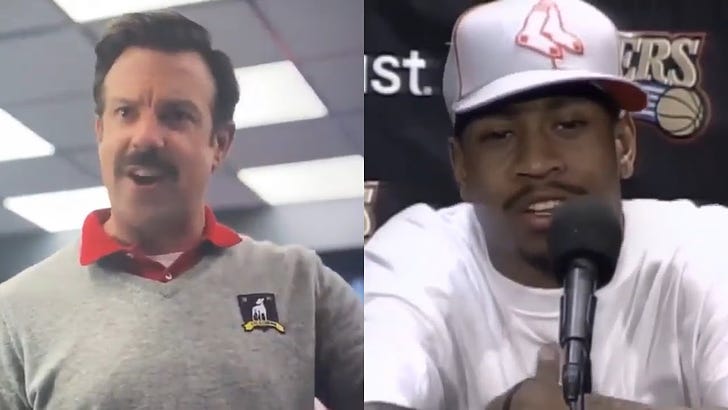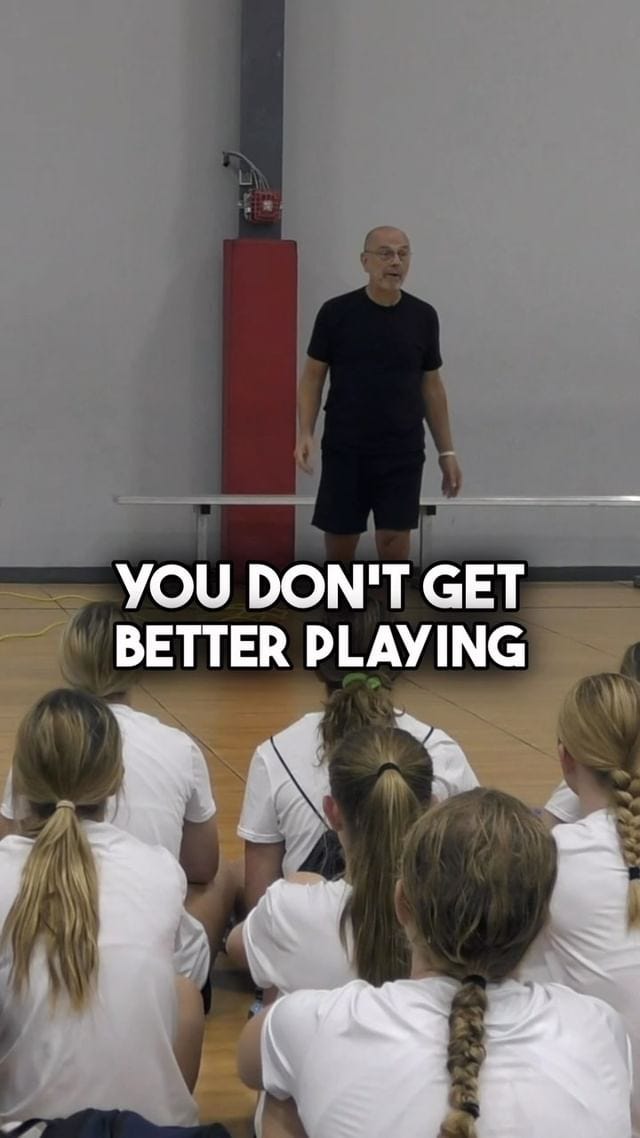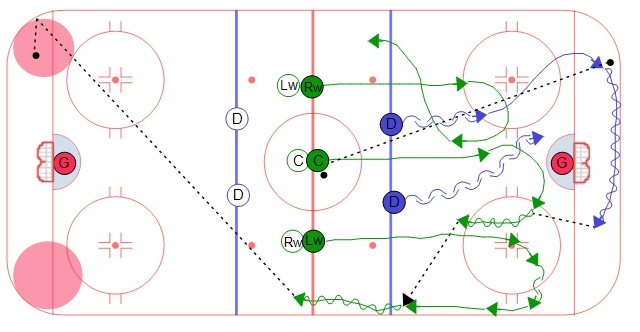We Talkin’ Bout Practice!
This is one of my favorite scenes in Ted Lasso mashed up with the Allen Iverson press conference (that was taken out of context) talkin’ bout: Practice. I think there is a mentality about how “practice makes perfect,” or, “practice means perfection,” but I fall along the lines of “practice makes progress.” More or less, I want players to fail in practice.
What does failure look like? About 10 years ago, I would say that all of my drills were done so that players would get “puck touches” and understand “patterns of the game.” Looking back, I can say that I missed something to actually help players who struggled; I consistently focused on details where I thought they needed to get better, but I was never able to evaluate if they understood effectively. The concepts and habits were not wrong, but the environment I created for them to learn in was wrong. Players would run through drills with no pressure; the “habits” I focused on were done with predetermined outcomes; players were always cheating the drill, and I would ultimately tell them that they were only cheating themselves, which led to, skating. The failures were not coming in practice, instead, they were happening in games! This led to that player/coach cycle I talked about in the last post.
Failure in practices allow our players to find the correct solution that suits them. The environment we create in practice should replicate game situations that our players may see. The beauty of a well-designed environment, is the amount of repetitions that a player may get, but the solutions may all be different based on what is presented to the player. We call this an “Action/Perception” couple in the Constraints Led Approach (CLA).
The Game
What is the best representation of the game in practice? Well, it’s the game itself. So, you might be asking, “why don’t we just play the game in practice?”
We want to be effective and efficient with the amount of time we have allocated to practices. Here’s a great post by Mike Boyle (my S&C idol) where he talks about players in the World Cup of Hockey and time of puck possession by some of the best players of the game.
Pretty astonishing, right? In 60 minutes of game play, some of the best players in the world possess the puck for approximately one minute. Now, let’s translate that to a youth hockey game. What does that look like? Yes, certainly, little Johnny may indeed score six goals in the game and have the puck the entire time, but what are we doing to develop the rest of the team? That is why practice design is crucial.
Relax, it’s just practice.
What are the learning objectives for your players for the season? What are your personal learning objectives as a coach for the season? Once you can establish these, the practice design becomes much simpler.
Here is an example below of what coaches might say at 10U/12U:
“My team can’t break the puck out. The wingers can’t pick the puck up off the boards and the center doesn’t get low enough for puck support.”
Players do not communicate
Wingers can not pick pucks up off the wall
Defenders can not make accurate passes
Centers do not pick the right side to support the wing/D
Players can not read the play under pressure
These are some bullet points for some underlying causes as to the overall problem of the team. Now that you have identified these underlying issues, what kind of drills can you design that would address these issues?
Here is a drill that some might come up with:
This is one of many continuous breakout drills that is great for pre-game practices and a practice that consists of flow drills. This drill starts by dumping the puck to the corner. Three forwards and two defense start in the neutral zone and they breakout using a pre-called breakout, in this case it is "Wheel to Center". As they are breaking out the next unit comes out to the neutral zone. After this unit breakouts out they will dump the puck into one of the corners. The next unit will then breakout using the same pre-called breakout. After a few repetitions change the pre-called breakout so you can practice as many different breakouts as you can. Possibilities for the breakouts include, but not limited to, the following:
D wheel to wing
D up strong side to wing
D wheel - reverse
D wheel - counter
D wheel to wing - back to D
You can find this drill on Ice Hockey Systems:
SAVY'S CONTINUOUS BREAKOUT DRILL
The Practice Review
Does this drill provide failure?
Did we address the underlying causes?
Is this an appropriate drill for a 10U/12U player?
What age group may this drill be appropriate for?
Is this an efficient use of ice time to address learning objectives?







